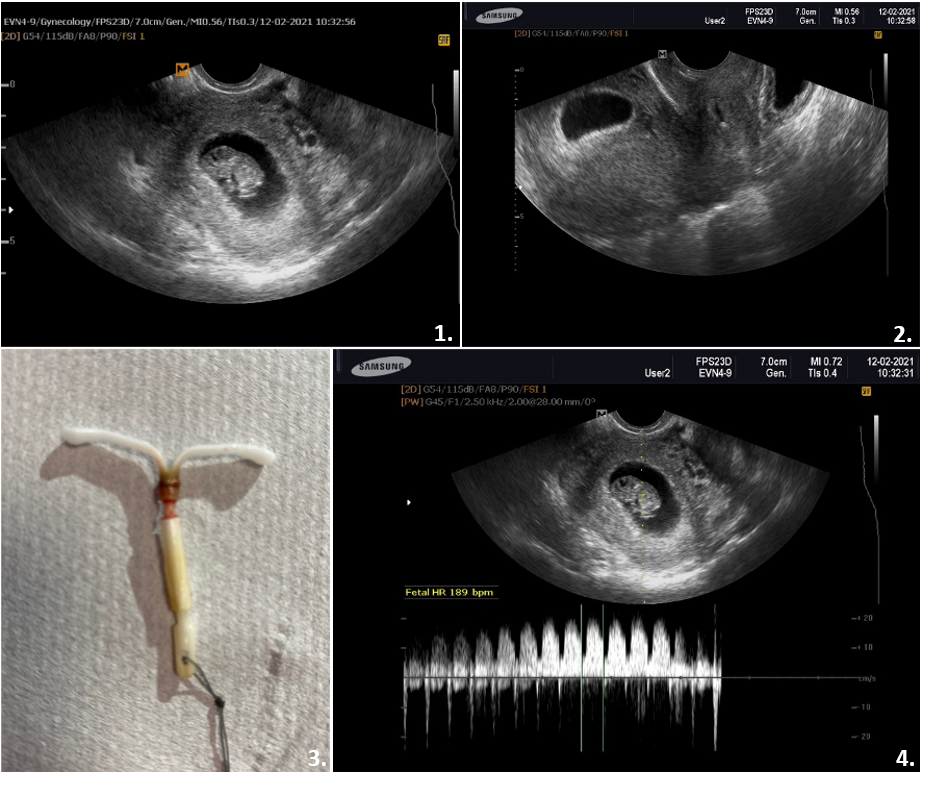Pregnancy in a levonorgestrel-releasing IUD user
Image Description
Levonorgestrel-releasing intrauterine devices are a highly effective method of contraception. The pregnancy rate among women who use them is extremely low. The failure rate is expressed by the Pearl index, about 0.9% over 3 years (1). This represents the number of pregnancies per 100 women per year conceived during treatment. Displacement of the IUD increases the pregnancy rate. Since displacement is more frequent in the first year after insertion, it is necessary to have frequent controls during this period, especially after insertion and after the first period (2). Pregnancies complicated by an IUD remaining in the uterus have an increased risk of miscarriage, preterm birth, and infection. Early removal of the IUD appears to eliminate the risks, but not entirely (3).
We present the case of a 27-year-old patient with a history of a full-term birth one year ago.
Six months ago, she had a levonorgestrel-releasing intrauterine device inserted. The patient presented with 8 weeks of amenorrhea and pregnancy-specific symptoms. Ultrasound showed an 8-weeks intrauterine pregnancy, and the IUD was dislocated at the isthmus. The patient decided to continue the pregnancy and the IUD was removed. After extraction, embryonic cardiac activity was present. The patient had no complications during pregnancy and delivered a full-term male newborn weighing 3200 grams with an Apgar score of 10.
References
Jaydess IUS. Drug Ther Bull. 2015 Jan;53(1):9-12. doi: 10.1136/dtb.2015.1.0304. PMID: 25592689.
Inal MM, Ertopçu K, Ozelmas I. The evaluation of 318 intrauterine pregnancy cases with an intrauterine device. Eur J Contracept Reprod Health Care. 2005 Dec;10(4):266-71. doi: 10.1080/13625180500195340. PMID: 16448955.
Brahmi D, Steenland MW, Renner RM, Gaffield ME, Curtis KM. Pregnancy outcomes with an IUD in situ: a systematic review. Contraception. 2012 Feb;85(2):131-9. doi: 10.1016/j.contraception.2011.06.010. Epub 2011 Aug 16. PMID: 22067777.


